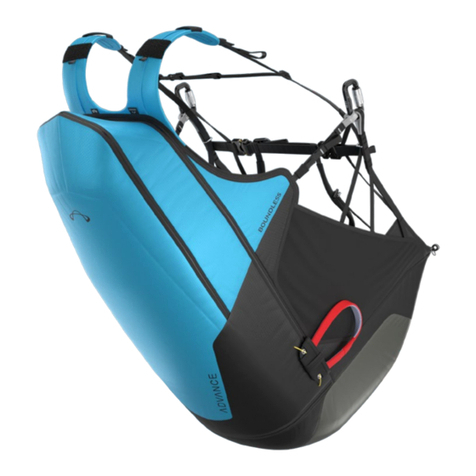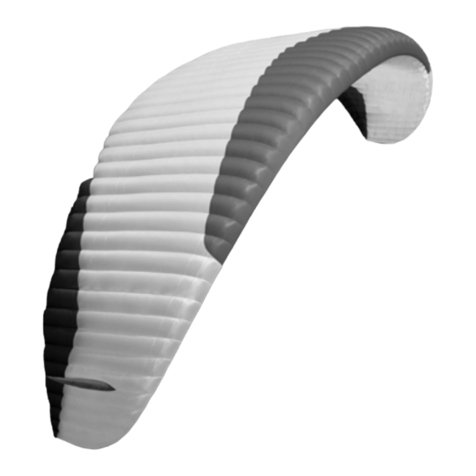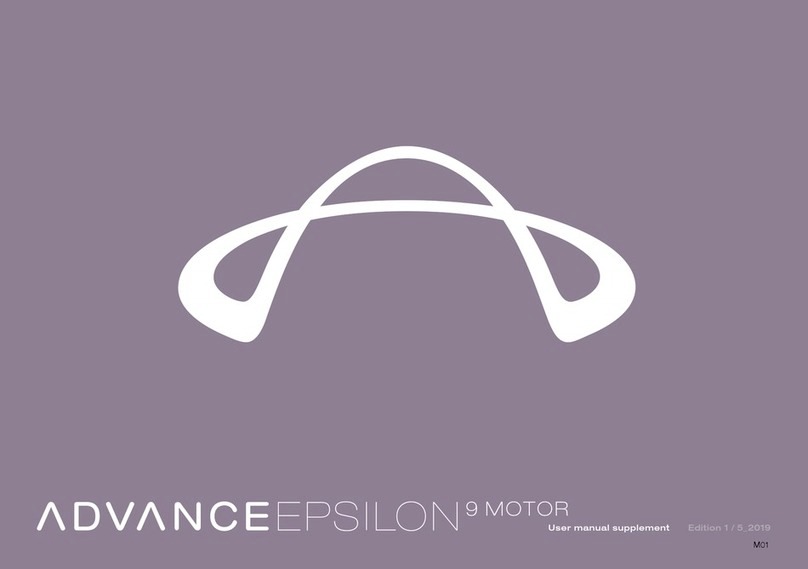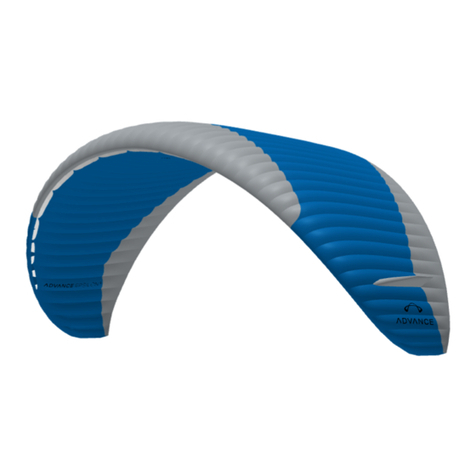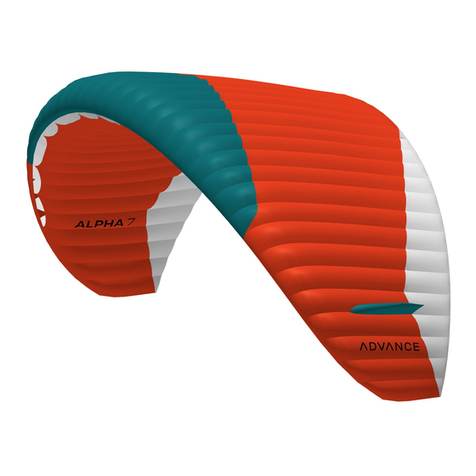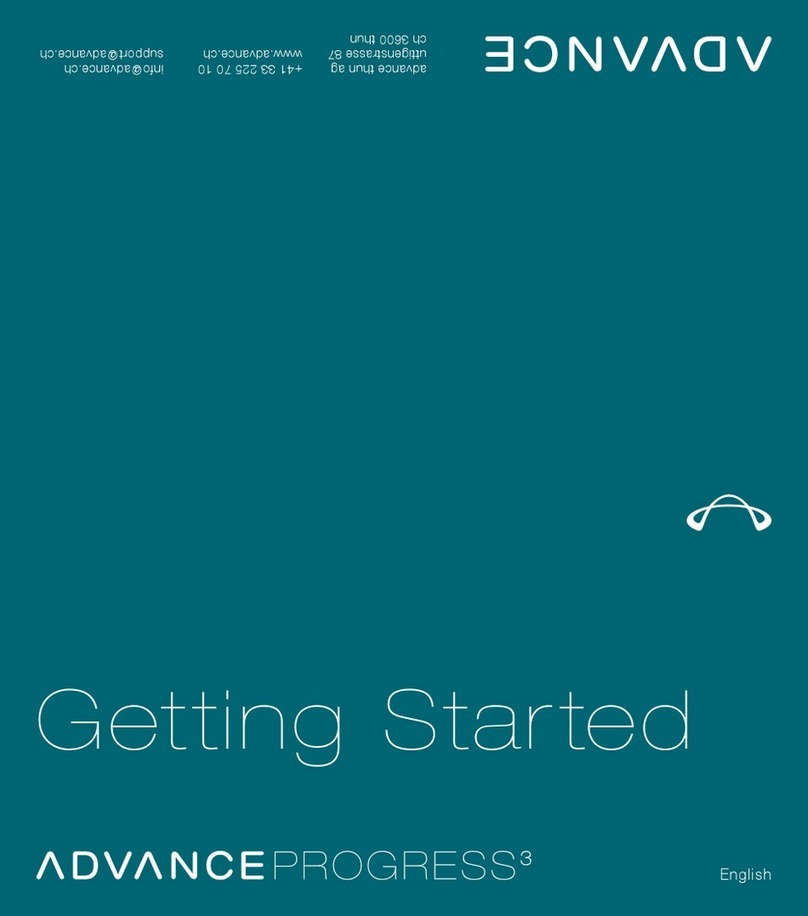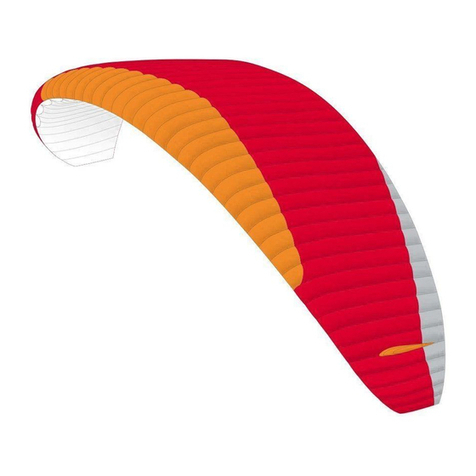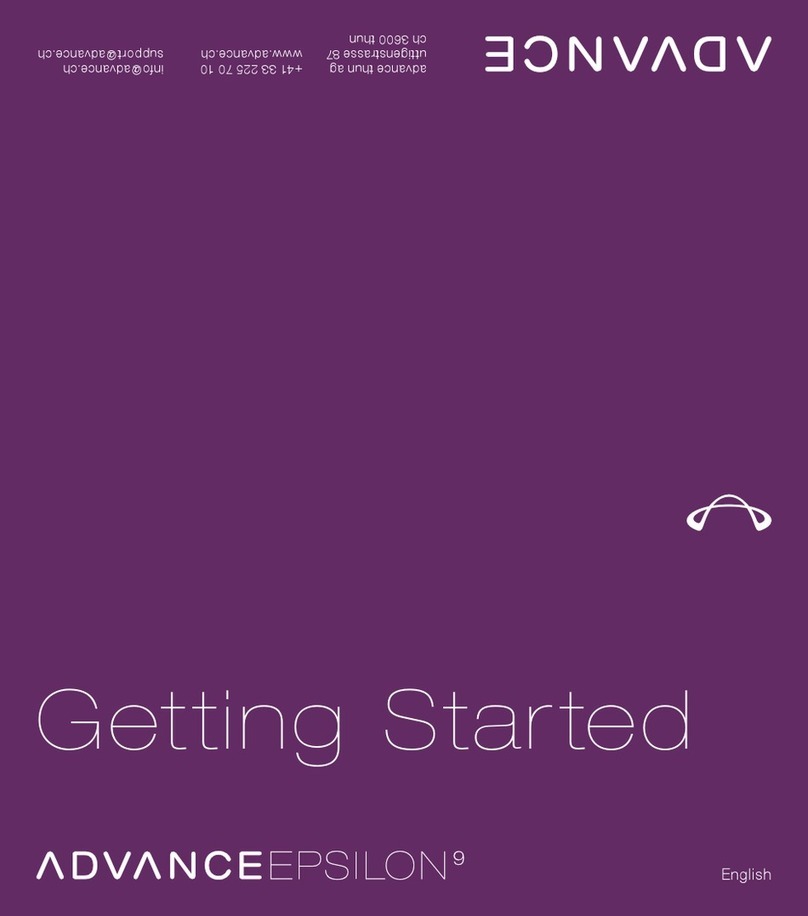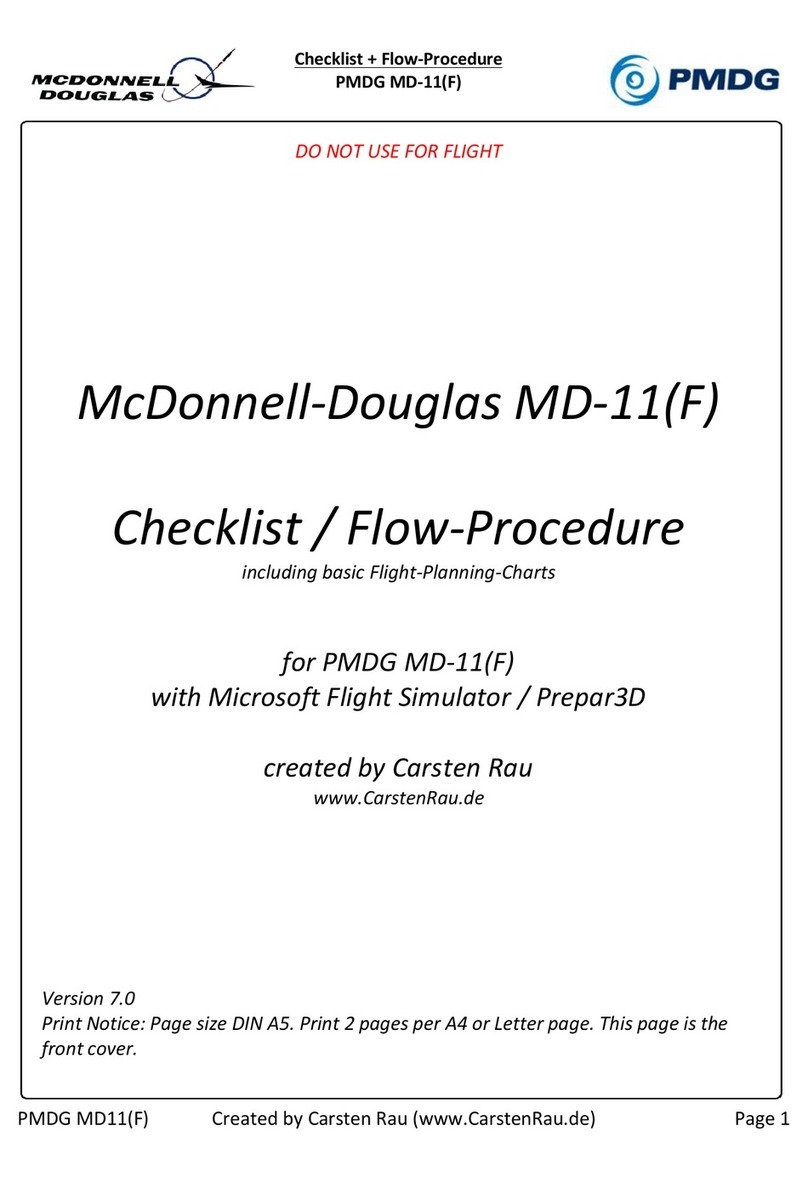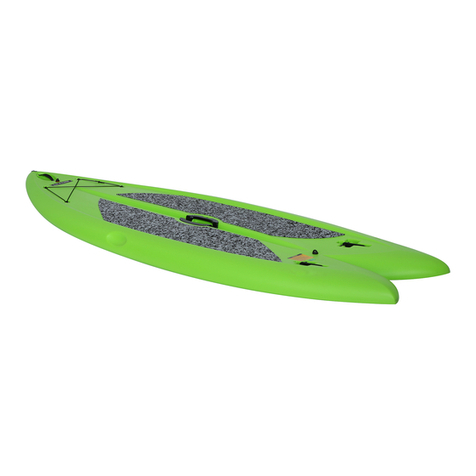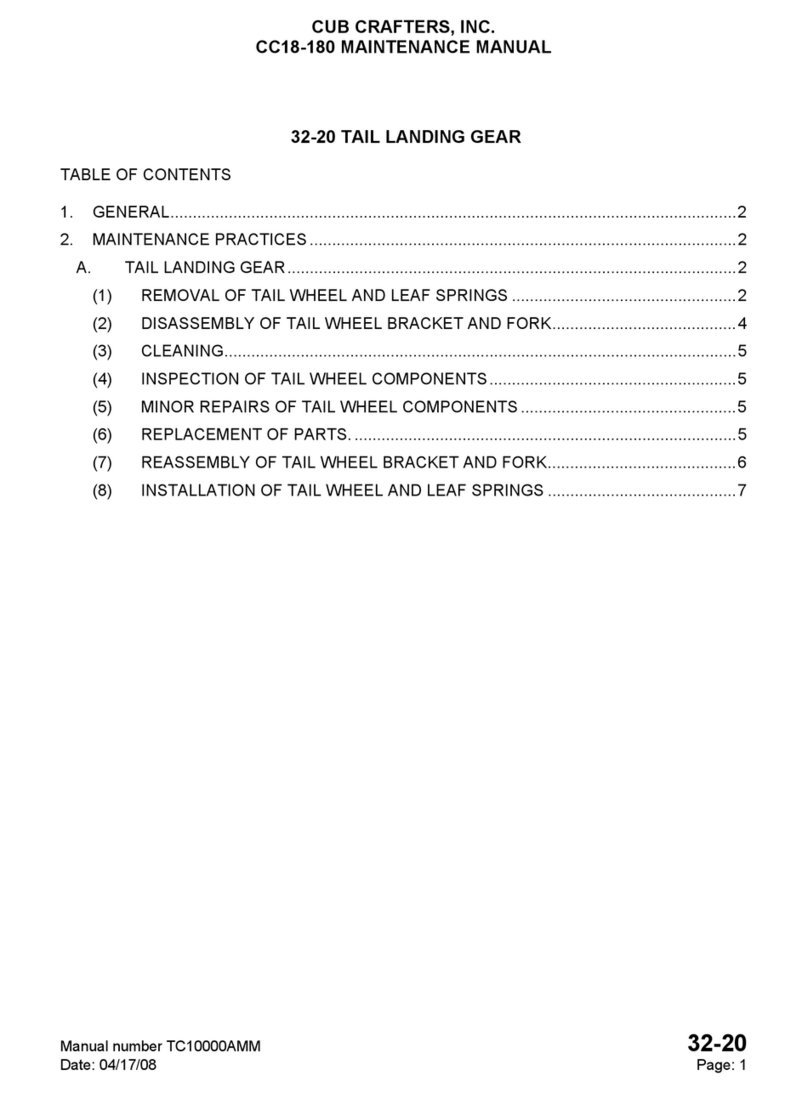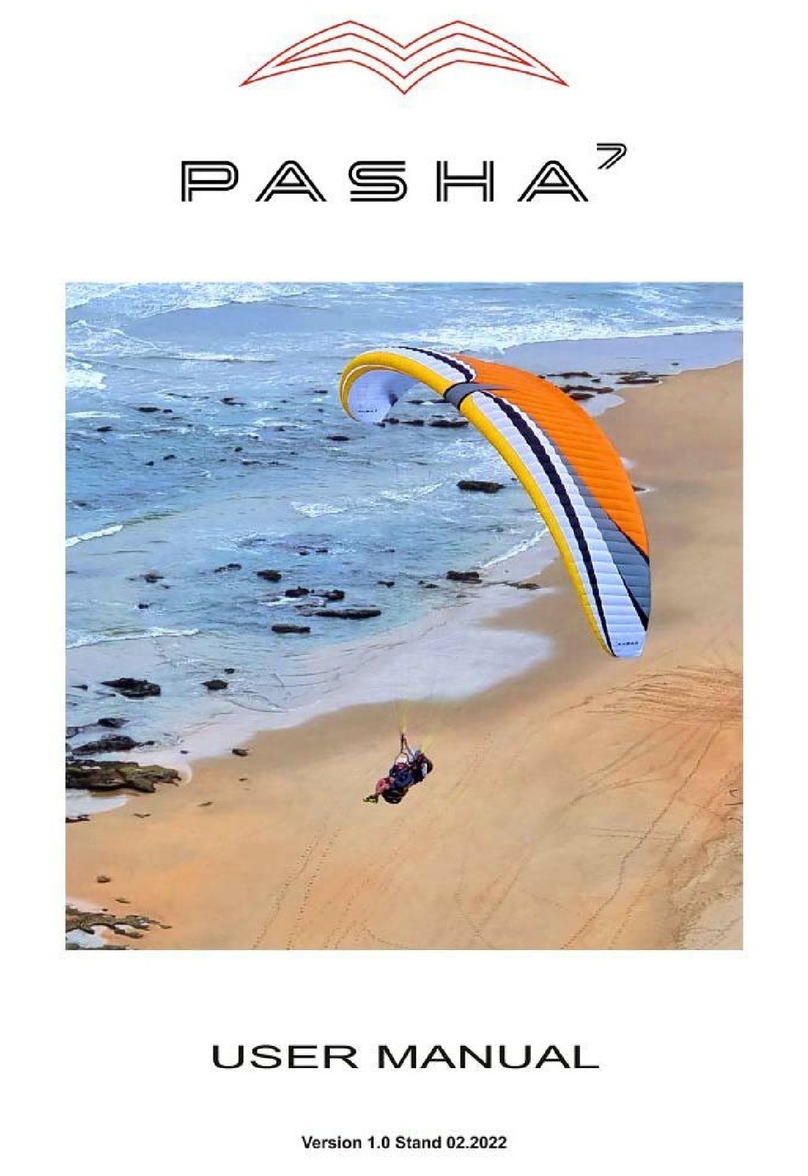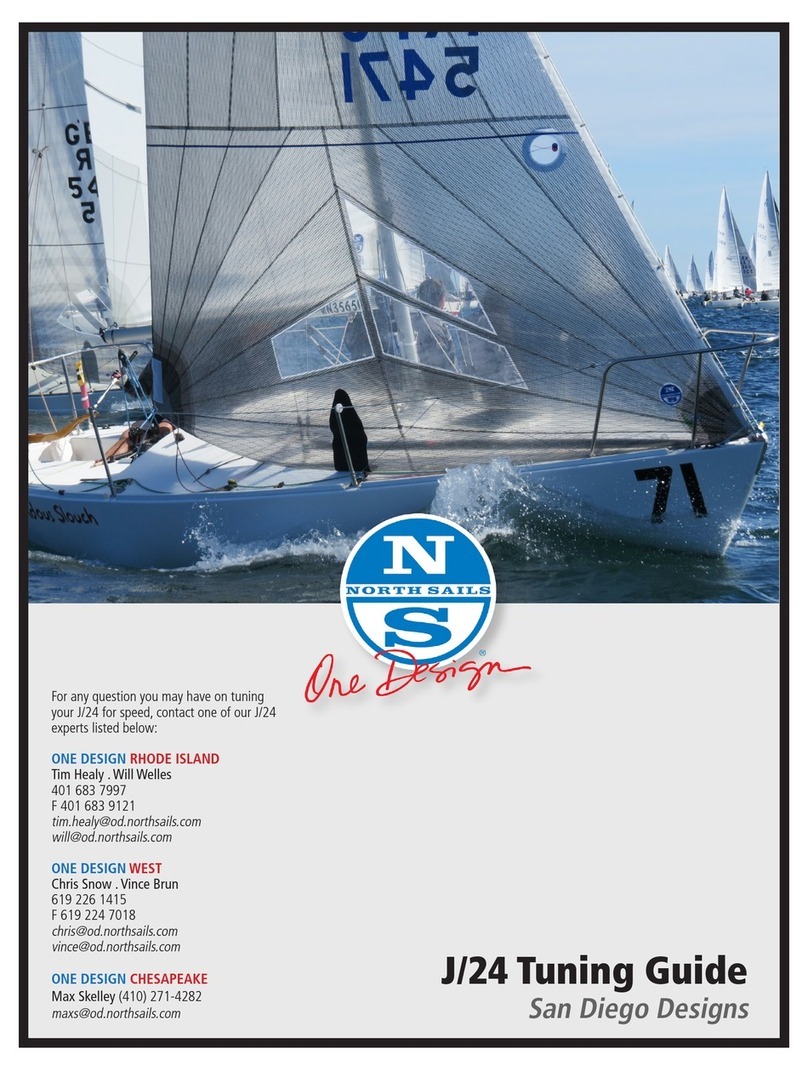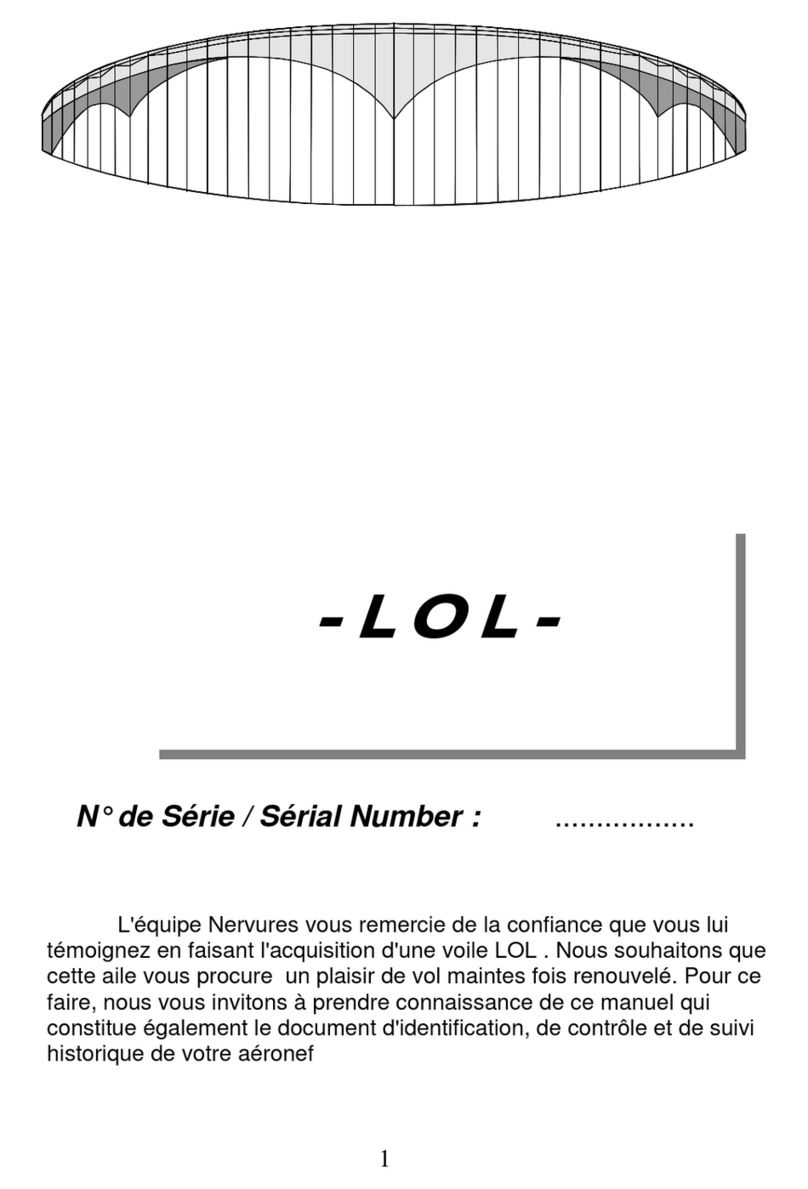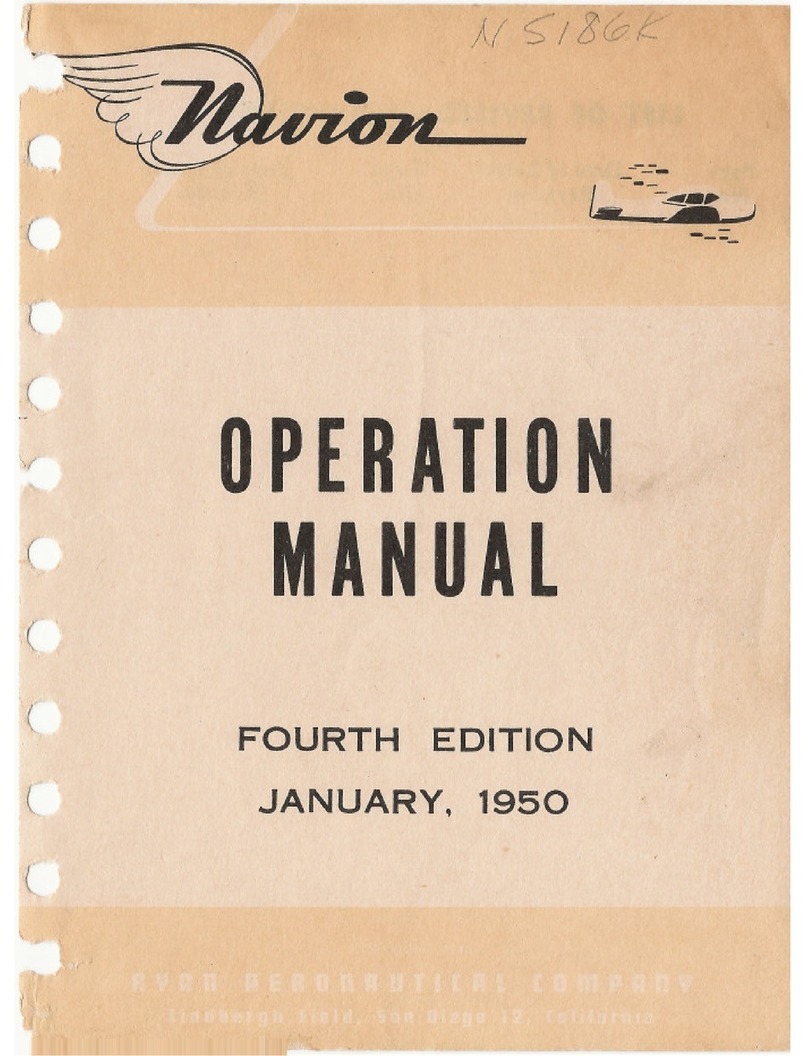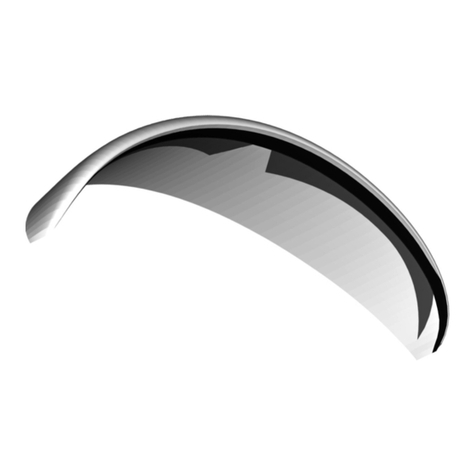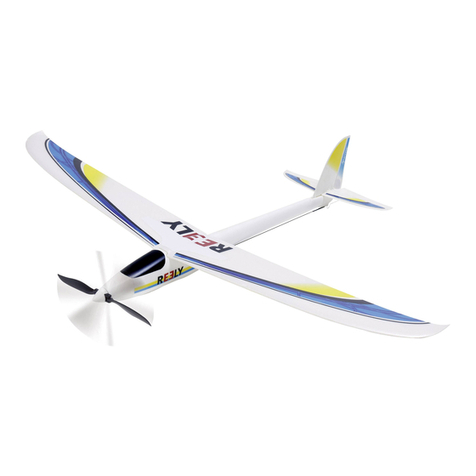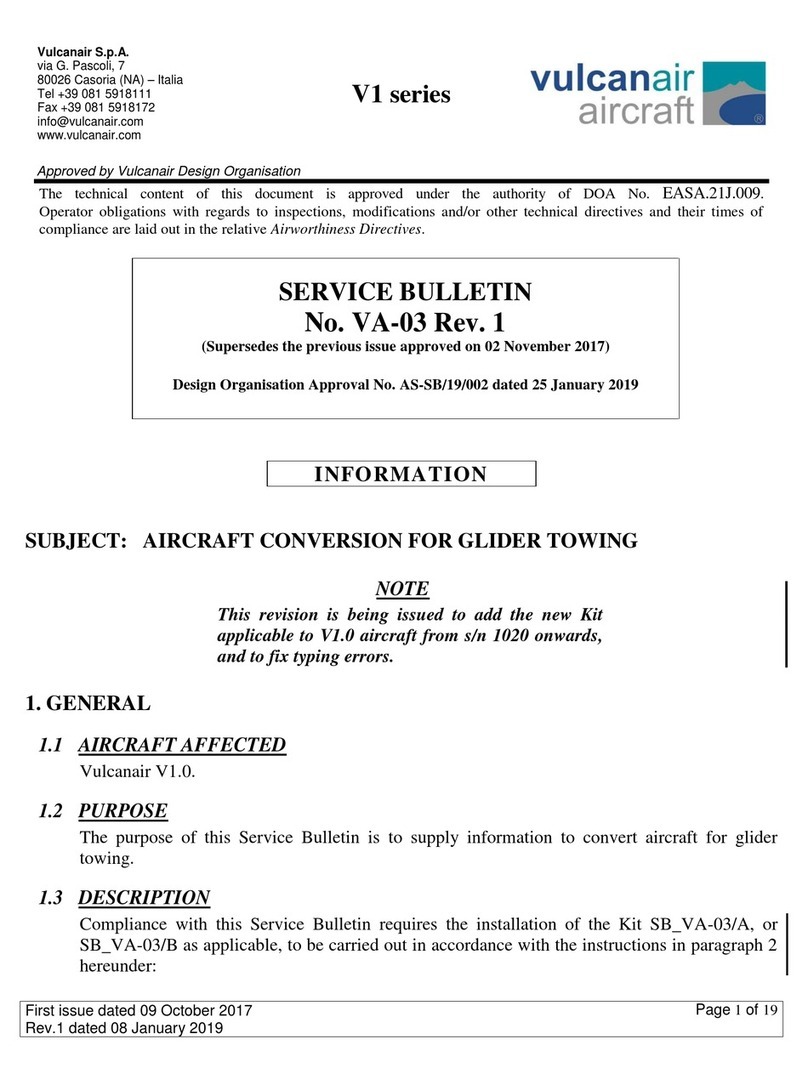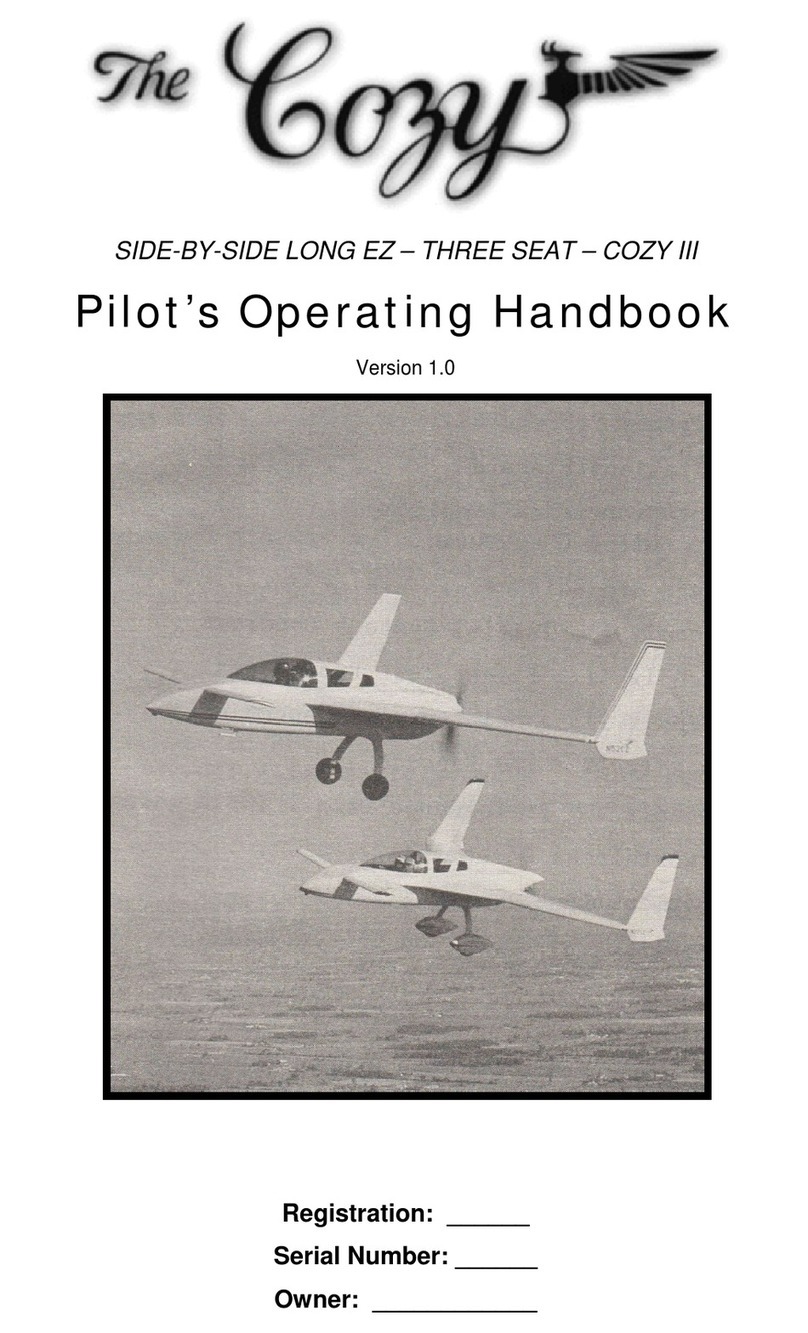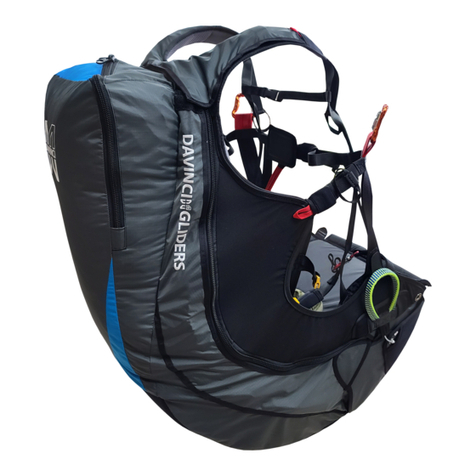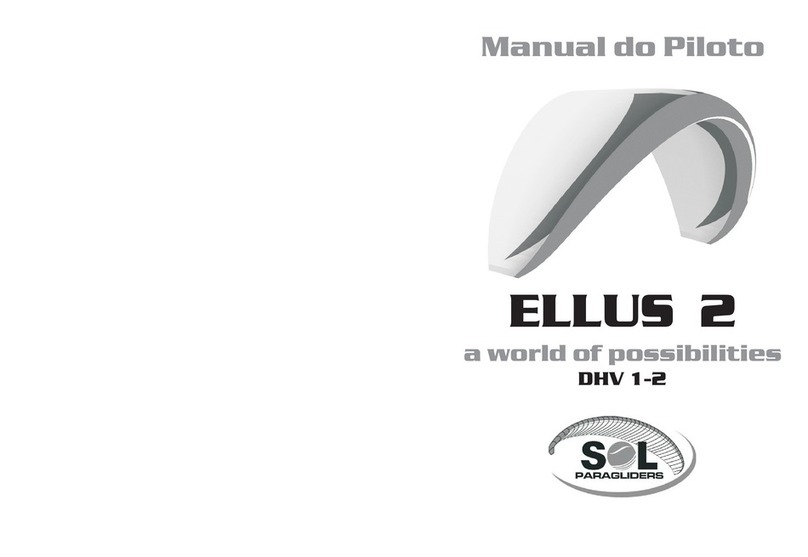
Adjusting the rucksack
The LIGHTPACK 2 Rucksack has been designed specially for the
LIGHTNESS 2 harness. The two sizes, S/M and L, are arranged
to carry a normal size paraglider, the LIGHTNESS 2 harness and
speedbag, reserve, helmet and the most important items of cloth-
ing. The compactness and geometry of the system provides a high
degree of carrying comfort.
Side pockets provide space for small objects and for a drink sys-
tem. The two lower side pockets are easy to reach while walking.
Never close the light duty zip fasteners under tension.
For an ideal individual adjustment ADVANCE recommend that you
proceed as follows for a fully packed rucksack:
1. Adjust the waist strap
The fastened waist strap of a packed rucksack should lie on the
hip bones. Pull the waist strap in at this position as far as feels
good. A correctly adjusted waist strap should carry most of the
rucksack weight on the hips.
2. Adjust the shoulder straps
Pull in the shoulder straps so that you can feel tham, but not so
that they put pressure on the shoulders. The low mounting of the
shoulder straps adapts to dierent upper body lengths. When cor-
rectly adjusted the shoulder straps lie over the shoulders, but do
not press or load them.
There’s room for clothes and instruments in the LIGHTPACK 2.
Side stowages, pockets at the back and in the waist strap, as well
as the multi-purpose bungee on the cover provide space for addi-
tional things. When the rucksack is full the side pockets can each
carry a 1.5L plastic bottle. The two lower side pockets are easy to
reach while walking. Hiking poles can be carried in the fastening
loops on the outside of the rucksack.
Caution: never drag the LIGHTPACK 2 over the ground.
Never pack pointed or sharp objects in the rucksack, or in
any of the pockets. They can damage the fabricc.
Use in practice
Flying in general
The LIGHTNESS 2 is own in a reclining position. If you have ad-
justed the harness correctly information from the wing will be trans-
mitted directly to your nether regions. Your weight will be evenly
distributed from the thighs to the shoulder blades. This means that
pressure points will be avoided, circulation will continue unimped-
ed, and you will maintain your concentration on long ights. The
aerodynamically optimised speedbag protects you from the cold
while serving as a foot support. Do the following takeo checks
before every takeo:
1. Helmet and harness chest strap fastened, reserve ok
2. Lines free
3. Canopy open
4. Wind direction and strength checked
5. Airspace and view free
Caution: Always fasten the chest strap rst, then the speed-
bag. Before every takeo, and especially after a failed take-
o, check – by a physical pull with the hand – that you have
closed both quick release buckles correctly. If the chest
strap is not closed you can fall out of the harness.
Using the speedbag
After lift o keep the forward-leaning upper body position so that
you do not slide down in the harness: you can then easily pick up
the dangling speedbag with a foot – preferably the right one. A
quick look down at the speedbag opening makes this easier to do.
The speedbag closes automatically when you stretch your legs in
it, and pressure on the footboard pushes you back into a comfort-
able reclining position.
After taking up the ying position and stretching your legs the
speedbag closure system will automatically close the speedbag
top and bring the cockpit into position. For landing take both feet
out of the speedbag in good time, and take up an upright position.
Always make a stand up landing, so as to avoid damage to body or
equipment.
Tip: The speedbag can be very warm; if it gets too warm in-
side bend a knee to let air in.
32 33






















